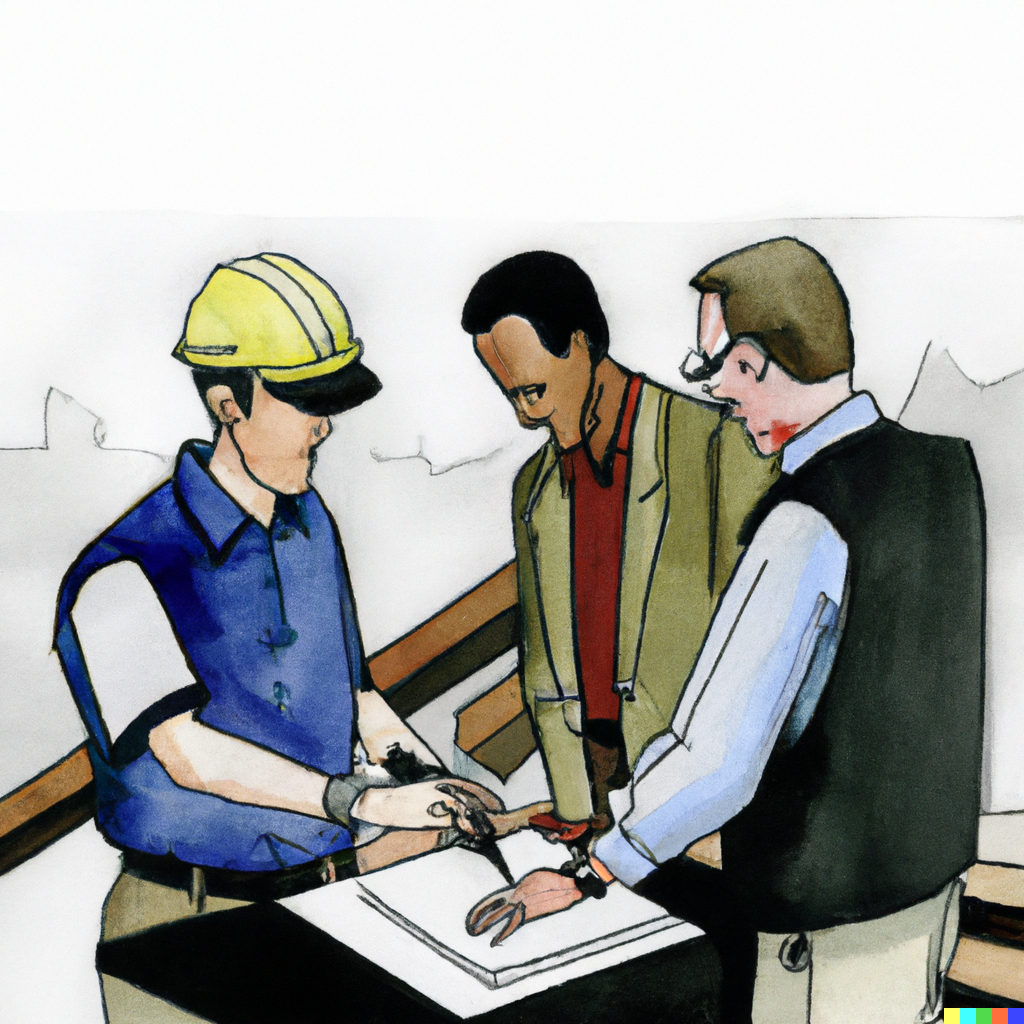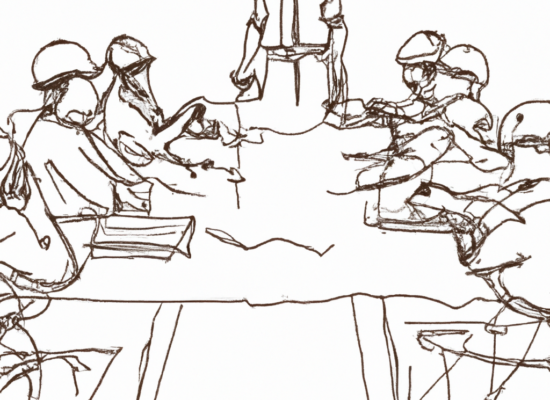Executive Summary: Project Delivery Methods
There are several project delivery methods used in the construction industry, including Design-Bid-Build, Construction Manager as Advisor (CMa), Construction Manager as Constructor (CMc) and Design-Negotiate-Build (DNB). Each method has its own set of pros and cons that should be considered before selecting the appropriate one for a specific project. Design-Bid-Build is a traditional method that allows for a clear definition of the project and the cost before construction begins but it can be time-consuming and may limit innovation. Construction Manager as Advisor (CMa) allows for greater collaboration between the architect and construction manager but can be more expensive. Construction Manager as Constructor (CMc) allows for greater control over the construction process but the architect’s role is limited. Design Negotiate Build (DNB) allows for greater collaboration between the architect and the construction manager and cost and schedule certainty but it can be more expensive than other methods as it requires the services of both an architect and a construction manager.
When it comes to AIA contracts, Design-Bid-Build is typically used with AIA A101, A201, and A401, CMa with AIA A201 and A401, CMc with AIA A201, A401 and A541, D-N-B can be used with AIA A201 and A401.
Design Bid Build Projects
In a design bid build project, the architect’s role is to design the project and prepare the necessary drawings and specifications. The architect also helps the owner in the bidding process by providing pre-bid meetings, clarifications, and addenda to the contractors. The architect also helps the owner in evaluating the bids received and recommends the most qualified contractor for the project. The owner then awards the construction contract to the selected contractor.
During the construction phase, the architect’s role is to provide design services, review and approve submittals, and conduct site visits to ensure that the work is being done according to the design and specifications. The architect also works closely with the contractor and the owner to resolve any issues that may arise during the construction process.
The architect is also responsible for issuing a certificate of substantial completion and a final certificate of completion to the owner and contractor, respectively. This signifies that the project has been completed according to the design and specifications and that the owner can begin to occupy the space.
In summary, in a design-bid-build project, the architect’s role is to design the project, help the owner in the bidding process and provide design services during construction to ensure that the work is being done according to the design and specifications. They also issue certificates of substantial and final completion to the owner and contractor.
Construction Manager as Advisor (CMa)
An architect’s role in construction projects can vary depending on the specific project and the parties involved. In some cases, an architect may work in conjunction with a construction manager as an advisor, also known as a CMa. This role is different from being the CMa and the architect is not responsible for managing the day-to-day construction activities. Instead, the architect provides joint construction administration services with the CMa, and the owner and contractor communicate through the CMa with copies to the architect.
The CMa and architect both review submittals and may request inspections or reject work that does not meet the project’s specifications. They work together to ensure that the construction is in compliance with the design and that the owner’s goals and objectives are met. Additionally, the CMa receives requests for information (RFIs) from the contractor and forwards them to the architect with a personal recommendation. This allows the architect to provide input and advice on how to address any questions or concerns that may arise during the construction process.
The CMa also plays an important role in preparing change orders, which must be signed by the CMa, architect, owner, and contractor. Change orders are used to make changes to the scope of work or budget for the project, and it is important that all parties are aware of and agree to any changes before they are implemented. The CMa works closely with the architect to ensure that any changes are in line with the project’s design and do not negatively impact the overall construction schedule or budget.
In summary, an architect working with a Construction Manager as Advisor (CMa) works in conjunction with the construction manager to provide joint construction administration services. They review submittals and request inspections, address RFIs and prepare change orders to ensure that the construction is in compliance with the design and owner’s goals and objectives are met. They work closely with the CMa and other parties involved in the project to ensure that the construction is completed on time and within budget.
Construction Manager as Constructor (CMc)
When an architect is involved in a construction project, they may work with a construction manager as a constructor (CMc). In this scenario, the architect’s responsibilities are closely aligned with those in a design-bid-build project. The architect must collaborate with the project owner and CMc to ensure that all aspects of the project are in line with the design and specifications provided. The architect is also responsible for reviewing and approving applications for payment that are submitted by the contractor.
However, it’s important to note that in this scenario, the architect is not functioning as a Construction Manager at Risk (CMa), a role that is distinct from that of an architect. A CMc is a professional who is responsible for managing the construction process and ensuring that the project is completed on time, within budget, and to the specified quality standards. They typically work as an intermediary between the owner and the contractor and are responsible for coordinating all aspects of the construction process, from pre-construction to completion.
In contrast, the architect’s role in this scenario is limited to ensuring that the project is being built according to the design and specifications provided. The CMc is responsible for issuing a certificate of payment to the owner, while the architect’s role is to review and approve the application for payment and ensure that the work is being done according to the design and specifications.
In summary, while the architect may work with the CMc in a construction project, they are not functioning as a CMc, and their role is limited to ensuring that the project is built according to the design and specifications provided. They are not responsible for the overall management and coordination of the construction process, which is the primary role of the CMc.
Design-Build
In a design-build project, the architect acts as a consultant to the design builder, who is responsible for both the design and construction of a project. This type of project delivery method is becoming increasingly popular as it allows for greater collaboration between the design and construction teams, resulting in a more efficient and streamlined process.
The architect’s scope of work in a design-build project depends on the services selected when the contract is signed. For example, some architects may only be involved in the initial design phase, while others may be involved throughout the entire project. In general, the potential roles for an architect in a design-build project are similar to those in a traditional design-bid-build project, but with a greater emphasis on collaboration and coordination with the design builder.
During the design phase, the architect will work closely with the design builder to develop a design that meets the client’s needs and budget. The architect will also be responsible for ensuring that the design meets all relevant building codes and regulations. Additionally, the architect may be responsible for coordinating the work of other consultants, such as structural engineers and MEP engineers, to ensure that the design is complete and accurate.
Once the design is complete, the architect will work with the design builder to develop a construction schedule and budget. The architect will also be responsible for providing construction drawings and specifications to the design builder, who will use them to solicit bids from subcontractors. During construction, the architect will be responsible for performing site visits to monitor the progress of the work and ensure that it is being built in accordance with the design.
Finally, once the project is complete, the architect will perform a final inspection to ensure that the work meets the design intent and that all deficiencies have been corrected. The architect will also provide the client with a final set of construction drawings, which can be used for future maintenance and repairs.
Overall, the design-build project delivery method allows for a more collaborative and efficient process, with the architect playing a key role in ensuring that the design is complete and accurate, and that the construction is being built in accordance with the design. With the right team of professionals, a design-build project can lead to a successful and satisfying outcome for all parties involved.
Integrated Project Delivery (IPD)
Integrated Project Delivery (IPD) is a project delivery method that brings together all stakeholders in a project, including the owner, architect, contractor, and other key members, to work collaboratively to achieve a common goal: the successful completion of the project. In an IPD project, the architect plays a vital role in ensuring that the project is built according to the design and specifications provided, as well as monitoring the progress of the construction.
The architect’s role in IPD is focused on quality control and cost monitoring. They are responsible for reviewing the design and construction documents to ensure that they comply with the project’s goals and objectives, as well as any applicable building codes and regulations. Additionally, the architect is responsible for ensuring that the project is built according to the design and specifications provided. This includes working closely with the contractor to review and approve shop drawings and submittals, as well as conducting regular site visits to monitor the progress of the construction and identify any potential issues that may arise.
In addition to quality control, the architect is also responsible for monitoring the project’s cost. They work closely with the owner and other stakeholders to establish and maintain a project budget, and they are responsible for identifying and addressing any cost overruns or other budget issues that may arise during the construction process. The architect also works closely with the contractor to review and approve change orders, ensuring that any changes to the project scope or schedule are properly documented and that the project stays within budget.
Overall, the architect plays a critical role in an IPD project, working closely with all stakeholders to ensure that the project is built according to the design and specifications provided, and that it stays within budget and on schedule. The architect’s focus on quality control and cost monitoring is essential to the success of the project, and their close collaboration with the owner, contractor, and other stakeholders is key to achieving a successful outcome.
Design Negotiate Build Projects
Design-Negotiate-Build (DNB) is a project delivery method that combines elements of Design-Bid-Build and Construction Manager at-Risk (CMa) methods. The owner hires an architect to design the project and prepare the necessary drawings and specifications. The architect then works with a construction manager to develop a guaranteed maximum price (GMP) for the project. Once the GMP is agreed upon, the owner invites contractors to bid on the project, with the winning contractor awarded the construction contract.
During the construction phase, the architect’s role is to provide design services, review and approve submittals, and conduct site visits to ensure that the work is being done according to the design and specifications. The construction manager is responsible for managing the day-to-day construction activities and ensuring that the project is completed on time and within budget.
In this method, the architect and the construction manager work together to make sure that the project is completed on time and within budget while ensuring that the project is designed and built according to the owner’s goals and objectives. The construction manager also plays a role in managing change orders, and in the communication between the owner and the contractor.
The pro of this method is that it allows for greater collaboration between the architect and the construction manager, and it allows for cost and schedule certainty. The con is that it can be more expensive than other methods as it requires the services of both an architect and a construction manager.
In summary, Design-Negotiate-Build (D-N-B) is a project delivery method that combines elements of Design-Bid-Build and Construction Manager at-Risk (CMa) methods. The architect and construction manager work together to develop a guaranteed maximum price, and the owner invites contractors to bid on the project. During the construction phase, the architect provides design services and the construction manager manages the day-to-day construction activities to ensure the project is completed on time and within budget.
Summary of Project Delivery Methods
Design-Bid-Build:
- In this method, the architect designs the project and prepares the necessary drawings and specifications. The owner then invites contractors to bid on the project, with the winning contractor awarded the construction contract. The architect’s role is to provide design services, review and approve submittals, and conduct site visits to ensure that the work is being done according to the design and specifications.
- Pros: The Owner has a clear definition of the project and the cost before construction begins.
- Cons: It can be time-consuming and may limit innovation.
Construction Manager as Advisor (CMa):
- In this method, the architect works in conjunction with a construction manager as an advisor. The architect provides joint construction administration services with the CMa, and the owner and contractor communicate through the CMa with copies to the architect. They review submittals and may request inspections or reject work that does not meet the project’s specifications.
- Pros: It allows for greater collaboration between the architect and construction manager, ensuring that the construction is in compliance with the design and that the owner’s goals and objectives are met.
- Cons: It can be more expensive than other methods.
Construction Manager as Constructor (CMc):
- In this method, the architect works with a construction manager as a constructor. The architect’s role is limited to ensuring that the project is being built according to the design and specifications provided. The CMc is responsible for issuing a certificate of payment to the owner, while the architect’s role is to review and approve the application for payment and ensure that the work is being done according to the design and specifications.
- Pros: it allows for greater control over the construction process.
- Cons: The architect’s role is limited, and they are not responsible for managing the day-to-day construction activities.
Design-Negotiate-Build (DNB):
- In this method, the owner hires an architect to design the project and prepare the necessary drawings and specifications. The architect then works with a construction manager to develop a guaranteed maximum price (GMP) for the project. Once the GMP is agreed upon, the owner invites contractors to bid on the project, with the winning contractor awarded the construction contract.
- Pros: It allows for greater collaboration between the architect and the construction manager, and it allows for cost and schedule certainty.
- Cons: It can be more expensive than other methods as it requires the services of both an architect and a construction manager.
In conclusion, the choice of project delivery method will depend on the specific project and the parties involved. Each method has its own set of pros and cons, and it’s important to consider these before making a decision.
 Copyright secured by Digiprove
Copyright secured by Digiprove 



